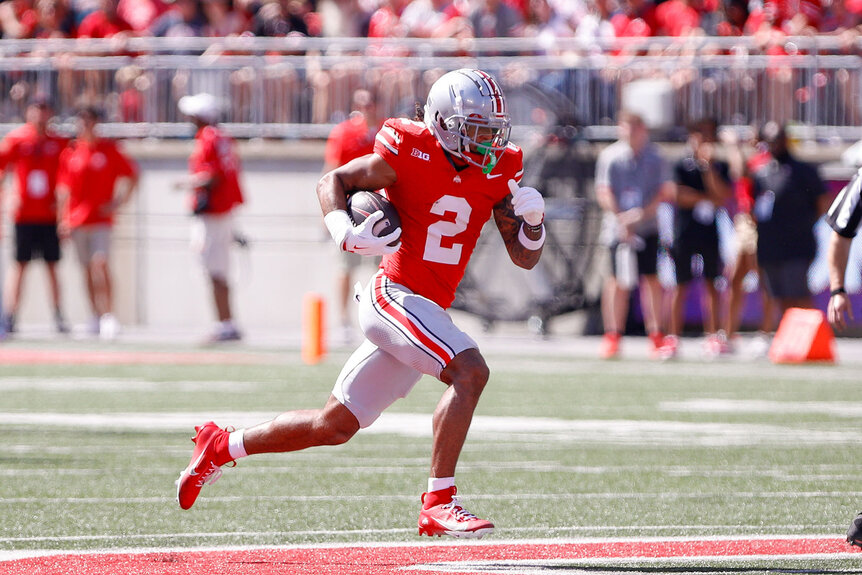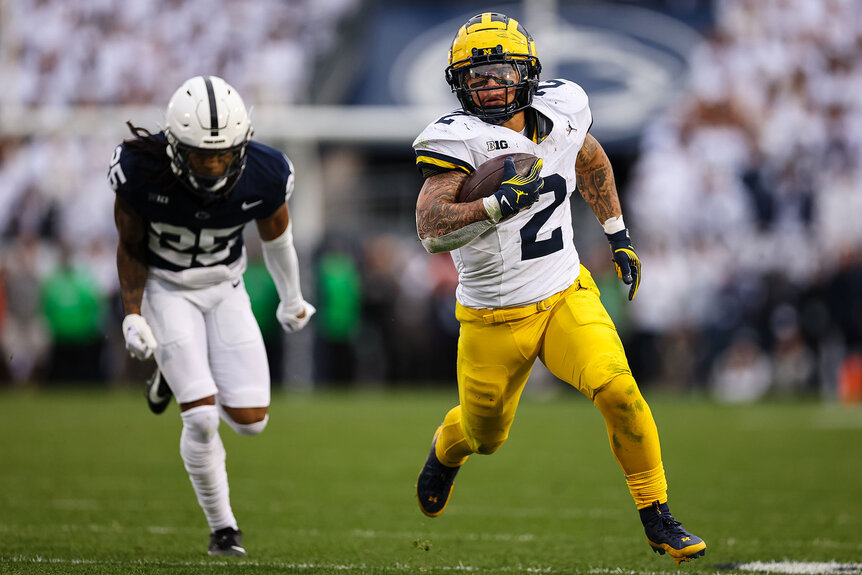Create a free profile to get unlimited access to exclusive show news, updates, and more!
How Does Overtime Work in College Football?
When overtime arrives in college football, teams play a unique version of the game to decide the winner.
There are no ties in college football. For more than 25 years now, the NCAA has made sure every game ends with a winner, no matter what time it arrives in the season, by utilizing an overtime period. They don't happen all that often, but as every college football fan knows, overtime can be one of the most exciting parts of watching the sport, particularly when overtime extends into multiple rounds of play.
But how does overtime work in college football? What's changed since overtime was first introduced? What does it take to win? Since overtime is definitely going to come up throughout the college season, let's take a closer look at how it all works.
RELATED: Everything to Know About the New 12-Team College Football Playoff
How does overtime in college football work?
If two teams are tied at the end of regulation, the first overtime period begins with a coin toss. The visiting team calls the toss, and the winner of that toss decides if they'd like to start the overtime period on offense or defense. The offensive team takes possession of the ball on the defending team's 25-yard-line, putting them just 25 yards from scoring.
From there, play unfolds like a regular football game, starting with 1st down and 10 yards to go. Time of possession doesn't really matter, and there is no set length for an overtime period, because the object of the game is to score as many points as possible with your possession. Once the offensive team has either scored or turned the ball over, the defenders get the ball and take over from the other 25-yard-line, working with the same procedure.
The goal, of course, is to either match or beat your opponent's score, so if the first team only managed a field goal, the second team can tie the game again with a field goal of their own or score a touchdown to win. The main idea of this system is that both teams will have an opportunity to possess the ball and theoretically win the game during the first overtime possession.
If the score is still tied after the first overtime, a second overtime period begins using the same procedure, but with one added caveat: If a team scores a touchdown, they must attempt a two-point conversion after said touchdown. The idea here is that two-point conversions are more difficult than extra point kicks, so it's harder for the two teams to simply keep tying each other. That said, if they are still tied after two overtime periods, the rules shift yet again.
Beginning with the third overtime period, both offenses start at their opponent's 3-yard-line, and they each get one shot at attempting a two-point conversion. There are no first downs, no second chances, just one shot at the end zone from three yards out for each team. If they're still tied after three overtime periods, overtime keeps going under the two-point conversion system until one team wins.
When did college football's overtime rules change?
The most recent change to overtime rules in college football took place in 2019.
For much of college football's history, ties were just part of the game. It wasn't until the bowl season in 1995 that the NCAA first instituted overtime rules, which were then fully installed for the 1996 regular season and have been a part of the game ever since. The 25-yard-line system has always been the way college football overtime works, and the rules were unchanged until the 2019 season. After a 2018 game between Texas A&M and LSU ran through seven overtime periods and nearly five hours of play, the NCAA instituted the two-point-conversion attempt system for later overtime periods beginning in 2019.
RELATED: Everything to Know About College Football Rule Changes for the 2024 Season
Back then, though, the two-point-conversion showdown didn't start until the fifth overtime period, and teams weren't required to start capping touchdown's with two-point conversions until the third overtime period. In 2021, the rules were amended again in an effort to further reduce overtime length, moving up the two-point tries after touchdowns to the second overtime and starting two-point-conversions only in the third overtime. It's that system that remains in place today.
How are college football overtime rules different from the NFL?
Instead of just taking turns, NFL teams start a whole new 10-minute overtime period of football, beginning with a coin toss to determine possession of the ball. Both teams will get a chance to possess the ball, unless the first offensive team scores a touchdown, at which point the game is over.
RELATED: NFL Overtime Rules Explained
If the first offensive team does not score a touchdown, either because they settled for a field goal or didn't score at all, the defensive team takes over possession and gets their shot at scoring. If the teams are still tied after this, sudden death overtime begins, and the next team to score wins the game. Crucially, in the regular season, if the game is still tied at the end of this 10-minute overtime period, then it just counts as a tie in each team's record. Playoff games extend the rules to select a clear winner, but no such luck in the regular season.
Can college football games end in a tie?
There are no ties, regular season or otherwise in college football; the game keeps going until someone wins, which can make for some very exciting moments.
Tune in to NBC and Peacock all season long for Big Ten and Notre Dame football!



















